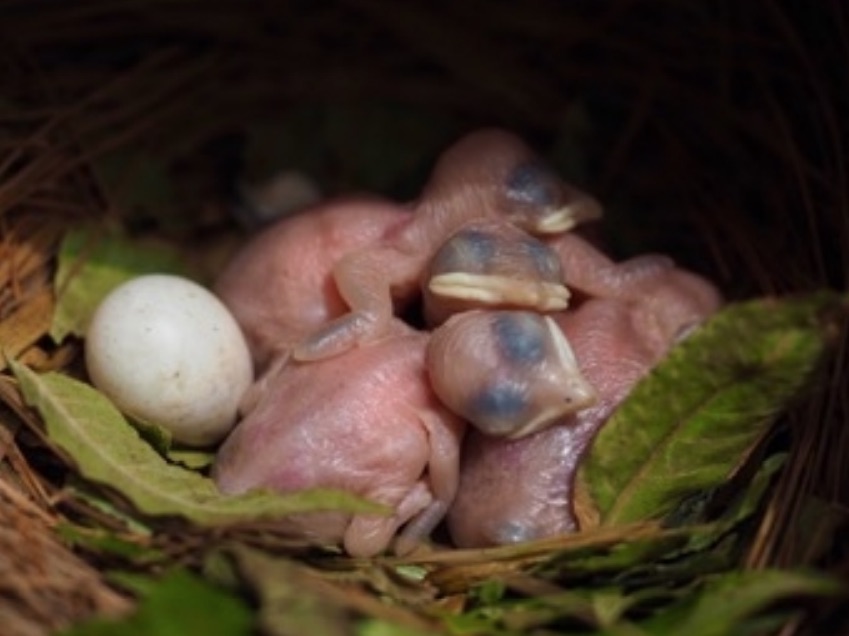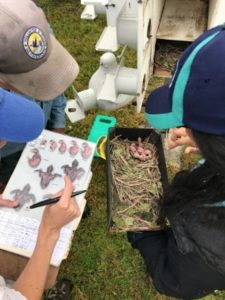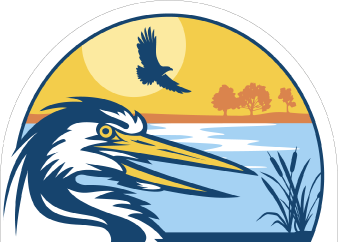
Some of the cavity nesting birds at Iroquois Refuge had a good season this year. Nesting season is over but there is still work to do. Nest boxes and martin houses need to be cleaned out and closed for the winter and gourds taken down and washed. Repair of any nest boxes will be undertaken and plans will be made for the 2019 nesting season. The winter is a good time to study and analyze our data and findings for 2018. We can then determine what changes would enhance nesting attempts and fledging success for the next breeding season.
Here is a summary of the 2018 season:
Click here to become a member!
Click here to donate!
Tree Swallows had a good year. Their totals for this year are as follows: 87 nests, 495 eggs, 402 hatched and 364 fledged. This was down 12% from last year. We banded 249 of these chicks and 27 adult tree swallows. We also recaptured 5 adult birds, all of which had been banded by us in previous years. These numbers are about average as the cold spring and House Sparrows caused a negative impact on the degree of success. We lacked coverage for monitoring early in the season but the UB students were a big help during the banding portion of the year.
Bluebirds were also down 15% this year. Their totals are as follows: 49nests, 209 eggs, 160 hatchlings and 138 fledglings. We banded 134 of these fledglings. The numbers are down and here again the cold spring, habitat loss and lack of sufficient house sparrow control caused several losses. I am happy to report that I do have some new ideas for house sparrow control to try for next year.
American Kestrels continued their downward trend. This is the first year that I have been at the Refuge that we have not had an American Kestrels nest. One male claimed a nest box, but apparently could not attract a female, so no eggs were laid. There was a successful nest which fledged five kestrels on the John White WMA which is the old game farm. We have attempted to attract kestrels to nest at other locations on the Refuge but have not been successful in over seven years. American Kestrels are declining in the North East (The New England States) with populations down over 85percent since the 1960s according to the American Kestrel Partnership. We need to do more work on this species to help reverse this trend.
The Purple Martins had a record year at the Refuge and adjoining NYS Wildlife Management Areas. The Purple Martin totals for 2018 are as follows: 166 nests, 832 eggs, 691 hatchlings and 615 fledged. We banded 630 of the hatchlings and 15 adults that were captured in the nest cavities. The hatchlings were banded with USFWS bands on the right leg and a green band on the left leg. This green band is unique to Iroquois Refuge in New York State. The adults were banded with the USFWS band on their right leg. Of the latter, seven of the birds were ASY (After Second Year) females and the other 8 were ASY males. Three of the females were second year birds. These 3 birds came from sites other than ours. We identified 11 birds by the green band numbers that had been banded at one of our sites and either returned to the same site or moved to another one of the sites that we manage. Several other green bands were observed but we could not read the numbers. If you see or hear of any green banded martins please record the date and location and report it to the Refuge.
We also fledged 39 House Wrens and a nest of 6 Blackcapped Chickadees. In total we fledged 1167 birds from our nest boxes and applied 1519 bands. Some of the martin chicks were banded with both a USFWS band and a green band, which is why the band number is greater than the number fledged.

We continued to assist in the third year of a parasite study being conducted by Heather Williams, a PHD student at the State University of New York at Buffalo. Heather collected data including nest temperature and humidity, nestling weights, and fledging success. In addition, the number of and the species of parasites in the several hundred nests (which were collected under a special permit) will be analyzed. Heather also conducted a comparison of success rates between routine nest changes versus no nest changes. She will issue a report on her findings at a later time.
This research study has been very interesting to work on and we look forward to hearing more about the analysis of the results.
In summary, I want to thank all the core leaders and assistants who contributed this year. They are as follows:
Core Leaders-Heather Williams, Celeste Morien, Bill Lathrop, Samantha Wilcox, Ramya Sridhar, Emma Clay and Lily Engebrecht. Bob Hazen is thanked for publishing our weekly data on the Purple Martin page on the FINWR website.
Other Assistants-Volunteers, 5 YCC Students (Linda Cox, Zoey Adkins, Adam Hess, Reagan Wilkin and Kyson Bellan), YCC Leader Krystian Drozd, High School and College Interns, Fisheries Staff and Interns, State DEC Biologists, PMCA Intern, Brian Haas, Field and Lab Technician at Great Lakes Center, Friends of FINWR and some family members. There were over 25 different people involved in our data collection. With the very welcomed assistance of these folks, we were able to do all that was needed to finish recording the data for the parasite study. A big thanks to everyone. Next year the work load will be less but we still encourage volunteer participation during nest checks and banding.

